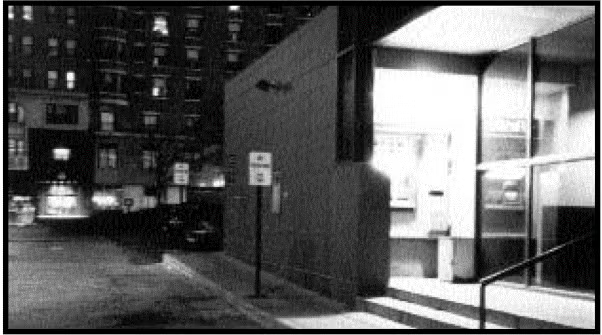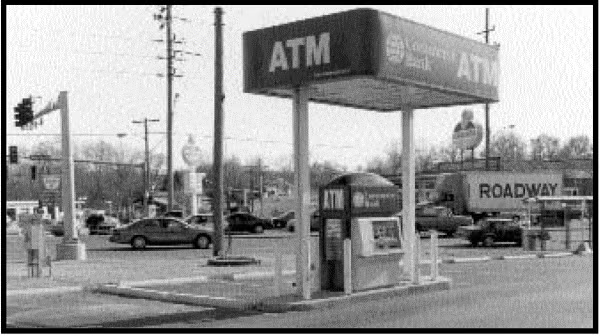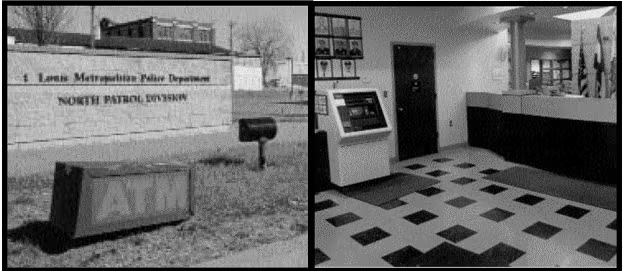
Center for Problem-Oriented Policing
Responses to the Problem of Robbery at Automated Teller Machines
Your analysis of your local problem should give you a better understanding of the factors contributing to it. Once you have analyzed your local problem and established a baseline for measuring effectiveness, you should consider possible responses to address the problem.
The following response strategies provide a foundation of ideas for addressing your particular problem. These strategies are drawn from a variety of research studies and police reports. Several of these strategies may apply to your community's problem. It is critical that you tailor responses to local circumstances, and that you can justify each response based on reliable analysis. In most cases, an effective strategy will involve implementing several different responses. Law enforcement responses alone are seldom effective in reducing or solving the problem. Do not limit yourself to considering what police can do: give careful consideration to who else in your community shares responsibility for the problem and can help police better respond to it.
General Considerations for an Effective Strategy
1. Imposing mandatory minimum security standards. Banks and other institutions that operate ATMs must comply with applicable U.S. federal laws, principally the Federal Electronic Funds Transfer Act (Regulation E) and the Bank Protection Act (Regulation P) (12 CFR §216.1). These federal laws, however, primarily address matters related to the security of the ATMs themselves and to fraudulent transactions, rather than matters related to ATM users' safety.
No federal law prohibits minimum security standards to protect ATM users;§ several states and a few cities have passed their own laws mandating minimum security standards for ATMs.§§ Most of these laws set minimum standards for lighting, landscaping, visibility, security reviews, and customer safety tips. The state of New York's law requires, in addition, surveillance cameras and locked vestibule doors that require an ATM card to access. Some laws provide for fines against ATM operators for violations of the standards. Some require annual compliance certifications for each ATM. If security-standard laws are enacted, adequate resources must be dedicated to inspection and compliance enforcement.§§§ Under some state laws, ATM operators who comply with the security standards are statutorily protected from civil liability. Some laws apply retroactively to all ATMs; others, only to new ATMs.
§ Federal law would probably preempt state and local law, and state law usually preempts local law. Some legal commentators believe that current federal law already preempts state law, but as yet, no court has made such a determination (Knapp 1996).
§§ The state of California (Cal. Fin. Code §13000–070) and the city of New York (N.Y. Admin. Code §10–160) pioneered minimum security standards for ATMs. Among the other states that have enacted similar laws are Nevada (Nev. Rev. Stat. Ann. §§660.115–.235), Washington (Wash. Rev. Code Ann. §19.174), Oregon (Or. Rev. Stat. §714.280–.315), Georgia (Ga. Code. Ann. §§7–8–1 to 8–8), Louisiana, Maryland (Md. Code Ann., Fin. Inst. §1–207), Florida (Fla. Stat. Ann. §§655.960–.965), Illinois, New York, and New Jersey.
§§§ New York City documented poor security conditions through a careful survey of ATM sites before enacting its legislation (City Council of New York 1991). City legislators have expressed concern that when the state assumed responsibility for enforcing the minimum ATM security standards in 1996, it failed to adequately fund the monitoring and enforcement function (City Council of New York 1998).
There are both positive and negative implications for specific security standards. Highly specific standards leave little room for debate about compliance, but they also inhibit technological innovations that could provide more security than mandated by the minimum standards.7
2. Using civil liability. Although police do not play a direct role in civil lawsuits resulting from ATM robberies, you should understand that ATM operators and premise owners carefully consider their civil liability when deciding where to place ATMs and what security measures to adopt. Much of the published literature addresses ATM security from a legal-liability perspective. Statutory and case law on liability for injuries sustained during ATM transactions varies across jurisdictions, so you should consult local legal counsel if you wish to know how the law applies in your jurisdiction. As a general proposition in the United States, courts take into account the knowledge that ATM operators had, or should have had, about the risk of robbery at particular ATMs when determining their liability for victims' injuries. Consequently, ATM operators are advised to consult frequently with local police about reports of crime around ATMs. Courts will usually hold ATM operators to the industry standards for basic crime prevention measures, although establishing liability also turns on other legal issues.§
§ Among the legal issues concerning ATM operators' civil liability are the foreseeability that the crime would occur; the standard for determining foreseeability; the victim's expectation of protection; and the various liability of the institution operating the ATM, any ATM network involved, the owner of the premise where the ATM is located, and the victim.
Specific Responses to Reduce ATM Robbery
Altering Lighting, Landscaping and Location
ATM operators should consider security as well as marketing in deciding where to install ATMs. The most commonly mentioned ATM robbery prevention measures in the literature are those that will be familiar to crime prevention through environmental design practitioners—lighting, landscaping and location.§§ ATM sites should be inspected regularly to ensure that safety features have not become compromised. ATM operators, police and bank regulators all should share responsibility for monitoring compliance.
§§ For a review of the crime prevention value of street lighting and closed-circuit television (CCTV), see Painter and Tilley (1999)[Full text].

3. Ensuring adequate lighting at and around ATMs. Adequate lighting at and around ATMs allows users to see any suspicious people near the ATM, and allows potential witnesses, including police, to see a crime in progress and get a good look at the offender. Good lighting can deter people from robbing ATM users in the first place. There should be adequate light around all building corners adjacent to the ATM, as well as for nearby parking places.
Most ATM lighting standards, including some mandated by law, call for minimum light levels at and around ATMs.§§§
§§§ Typical minimums are 10 foot-candles within five feet of the ATM, and two foot-candles 50 to 60 feet away from the ATM, measured at three feet above the ground (Ellis 1996; CUNA Service Group 1999; Illinois Office of Banks and Real Estate 1999[Full text]).
According to lighting designers, however, most minimum lighting standards do not address all the factors that affect visibility. Shadows, light types, light colors, light-source direction, light uniformity, glare, and obstructions all affect visibility for the observer.8 A qualified lighting designer should plan ATM lighting. Lights should turn on automatically via photo sensors rather than by manual or timer switches. Light levels, once set properly, should be monitored regularly to ensure they do not fall below acceptable levels. Long-lasting light bulbs should be used. Automated light-detection monitors can alert the ATM operator if light levels drop. Light fixtures must be adequately protected so that offenders cannot disable them.


§ Anne Arundel County, Maryland, installed ATMs in all its police stations in response to a rash of ATM robberies (Morgan 1997).

8. Relocating, closing or limiting the hours of operation of ATMs at high-risk sites. ATM operators should assess crime rates and other measures that suggest the overall risk level of the area in which they are considering installing an ATM. ATMs should not be placed in areas known for drug trafficking and sites near abandoned property or crime-prone liquor establishments.12 While ATM operators should not avoid placing ATMs in all low-income areas with higher crime rates, it might be reasonable to restrict ATM operation to daylight hours in such areas.13 ATM operators should consult with local police when choosing sites and notify police of all ATM locations. Local laws should require such consultation as part of the routine site planning and business licensing processes.14
Implementing Public Awareness and Education Initiatives
9. Providing ATM users with safety tips. ATM users should be advised about what steps they can take to reduce their risk of getting robbed.15 While it is unlikely that providing safety tips will prevent any particular robbery, the larger purpose is to change ATM users' habits. Safety tips can be provided through mailings to cardholders, signs posted at ATMs, messages printed on ATM receipts, messages displayed on ATM screens, safety presentations, and public awareness campaigns. Listed below are some standard safety tips for ATM users:
- Be aware of your surroundings, especially between dusk and dawn. If you notice anything suspicious—a security light out, someone loitering nearby—consider coming back later or using a supermarket or convenience store ATM.
- If using the ATM at night, take someone with you.
- Park in a well-lit area as close as possible to the ATM.
- At a drive-through ATM, be sure the doors are locked and the passenger windows are rolled up.
- If you withdraw cash, put it away promptly; count it later, in private.
- Put your ATM card and receipt away promptly; never leave your receipt at the ATM.
- Keep your PIN secret—don't write it down, and don't share it with anyone you don't trust absolutely.
- Your PIN provides access to your account.
- Shield the keypad when entering your PIN to keep it from being observed.
- Avoid being too regular in your ATM use—don't repeatedly visit the same machine at the same time, the same day of the week, for instance.16
ATM users should further be advised to close any vestibule doors securely and not to open doors for others. In addition, signs at ATMs should state that the site is being surveilled by cameras.
Some victims resist during robberies either to protect their valuables or because they believe the offender is about to get violent. Some succeed in preventing the robbery through resistance, while others get injured or killed. Offenders want to get the crime over with quickly so they can escape. Any delay increases their nervousness and, therefore, the likelihood they will become violent.17 Robbers are usually highly agitated and easily perceive the victim's actions as threatening.18 Drug and alcohol use will obviously influence their emotional state. Some use violence immediately to preempt any resistance. In cases with multiple offenders, the risk of violence increases because each offender is also concerned about appearing tough and in control to the other(s).19
As with other violent crimes, victims should assess the particular situation, taking account of nearby assistance, weapons they are threatened with, offenders' behavior and emotional state, their own defensive abilities, and their own psychological need to resist. Given an imperfect understanding of why robbers become violent, compliance is usually the safer course of action for victims, and the best advice for police to offer.20 Widespread victim compliance, however, undoubtedly leads some offenders to perceive lower risk and, therefore, increases their ATM robbery rates.
Using Surveillance
10. Installing and monitoring surveillance cameras at and around ATMs. Surveillance cameras at and around ATMs serve two main purposes—to deter robbery and fraud, and to facilitate offender identification. If the experience with surveillance cameras inside banks is any guide, they serve the latter purpose better.21 There are two basic types of surveillance cameras—those that capture live images (such as CCTV), and those that merely record images that can be viewed later. Surveillance cameras should record both closeup images of the ATM user and the view immediately behind the user. A camera placed on or inside the ATM that is activated when a transaction is initiated serves this purpose. Such cameras should have wide-angle lenses not exposed to direct sunlight and should be mounted high off the ground to prevent vandalism. Plainly visible cameras are more effective deterrents to robbers, but are more vulnerable to vandalism.22 Older technology uses videocassette recording; newer technology, which costs less to maintain, provides digital color images that are transmitted via Internet networks to remote sites, where they can be viewed online or stored and retrieved later.23 Dummy surveillance cameras should not be used unless there are also working cameras at the site, because they create a false sense of security among ATM users.24 At least one ATM operator has installed heat sensors around the ATM that detect the presence of people out of view of surveillance cameras. The sensors can activate either a recorded voice message warning the person to move away from the ATM, or a silent alarm.25
11. Installing devices to allow victims to summon police during a robbery. There are several mechanisms by which ATM users can summon police quickly:
- Panic buttons installed on the ATM. Some security consultants and police, however, worry that panic buttons will just exacerbate the false-alarm problem that is already burdening police resources.26
- Telephones next to the ATM.
- Live microphones in the ATM. A security company can monitor such microphones.
- Door alarms. Door alarms can be set so that they are automatically activated if a door to an enclosed vestibule is left open too long.
- Reverse PIN technology. An ATM user can activate a silent alarm by entering his or her PIN in reverse order or by entering an additional digit after the PIN. This so-called "reverse PIN" technology has been patented, but is not known to be in use yet anywhere. A study of its feasibility conducted for the state of Illinois concluded it was cost-prohibitive and unlikely to be effective because robbery victims are under such extreme stress.
12. Deploying private security guards at ATMs. Security guards can either be assigned just to high-risk ATMs or be assigned to randomly patrol many ATMs.27 This response is considered the least attractive to ATM operators due to the high cost.28
Targeting Offenders
13. Controlling street drug markets. High rates of street robbery usually coincide with high levels of street drug trafficking, particularly in crack cocaine. Crack addicts have frequent and immediate cravings for the drug; street robbery, especially around ATMs, is one of the fastest ways for them to get cash to buy the drug. Therefore, whatever you can do to control the volume of street-level drug trafficking will also likely reduce the street robbery rate, including ATM robbery.§
14. Targeting repeat offenders. Where it can be established that a few offenders are likely responsible for many local ATM robberies, the offenders should be targeted by repeat offender programs.§ Detectives and patrol officers should cultivate informants to identify and apprehend active offenders.29 Offering rewards for information is also good practice. Interviewing offenders after they have been convicted is useful both for clearing other cases and for improving intelligence about the rate of ATM robbery committed by a few repeat offenders.30
§ For a thorough discussion of the principles of repeat offender programs and descriptions of model programs, see Spelman (1990). See also Problem-Solving Tools Guide No. 11, Analyzing and Responding to Repeat Offending.
There are limits, however, to what arresting, prosecuting and incarcerating ATM robbers can do to prevent ATM robbery. Most street robbers are so highly motivated to get quick cash that they discount the likelihood of getting caught and sent to jail.31
Hardening Targets and Denying Benefits
16. Requiring that ATMs be located in enclosed vestibules with doors that lock. The state of New York requires that ATMs be in enclosed vestibules with doors that lock. Door locks can be programmed to admit only bank customers, but given the profits to be earned from noncustomer service fees, most banks dislike this added security measure. Some security consultants believe that enclosed vestibules create more problems than they prevent.33 Door locks are frequently vandalized. Moreover, ATM users habitually open locked doors as a courtesy to others, or allow others to follow them into the vestibule.34 An offender who gets into an enclosed vestibule with a victim can more easily trap the victim. Enclosed vestibules also attract homeless people looking for a warm, dry place to sleep.
Free Bound Copies of the Problem Guides
You may order free bound copies in any of three ways:
Online: Department of Justice COPS Response Center
Email: [email protected]
Phone: 800-421-6770 or 202-307-1480
Allow several days for delivery.
Email sent. Thank you.
Robbery at Automated Teller Machines
Send an e-mail with a link to this guide.
* required
Error sending email. Please review your enteries below.
To *
Separate multiple addresses with commas (,)
- Your Name *
Your E-mail *
Copy me
Note: (200 character limit; no HTML)
Please limit your note to 200 characters.